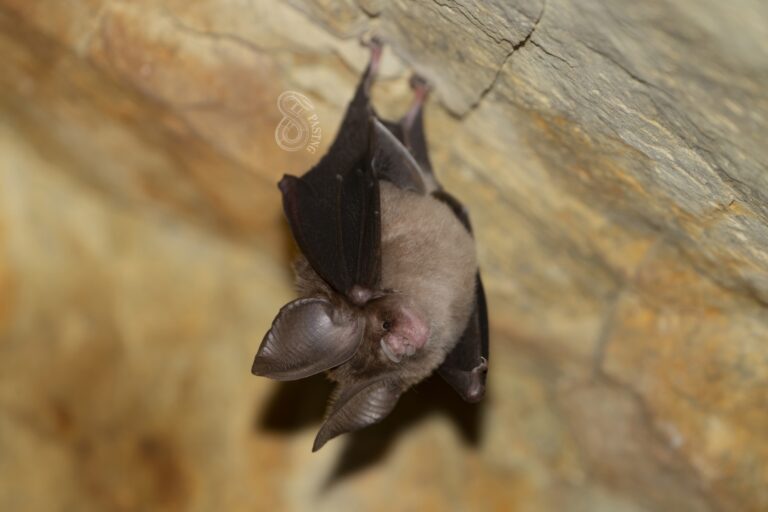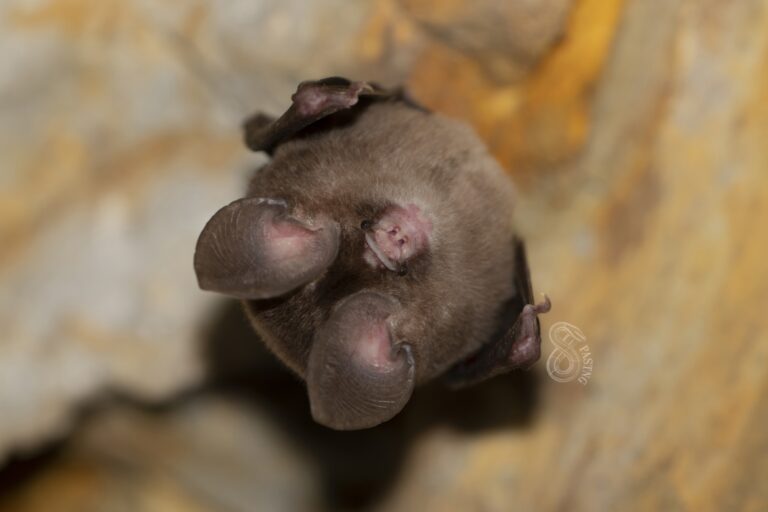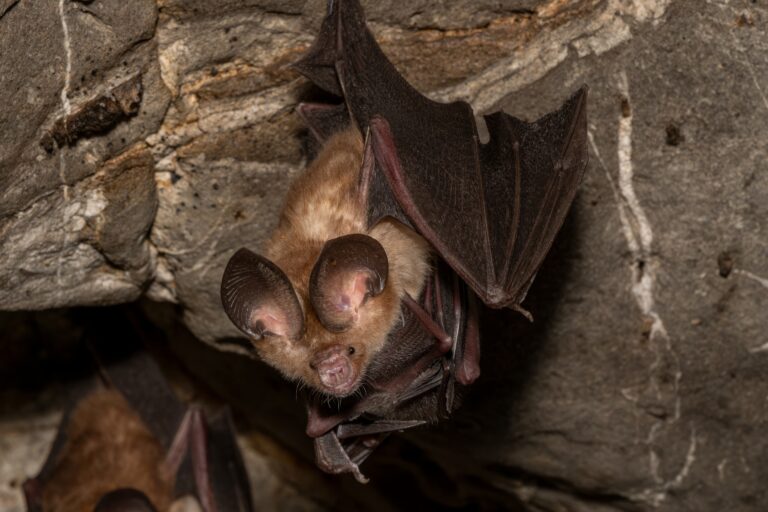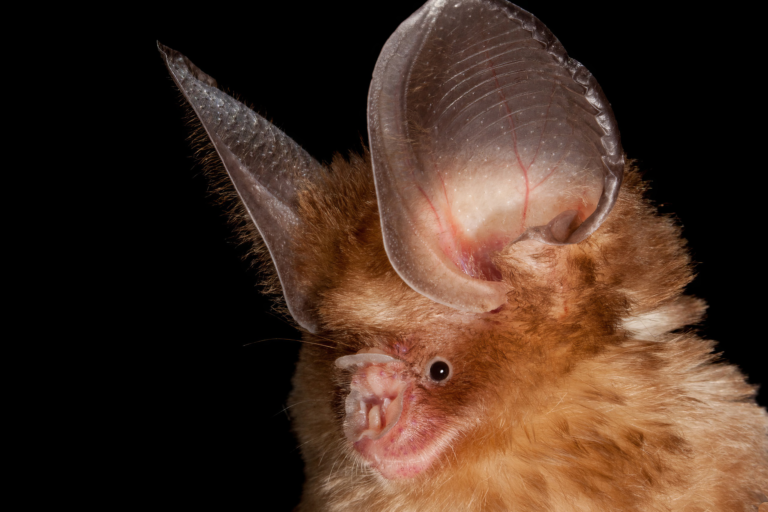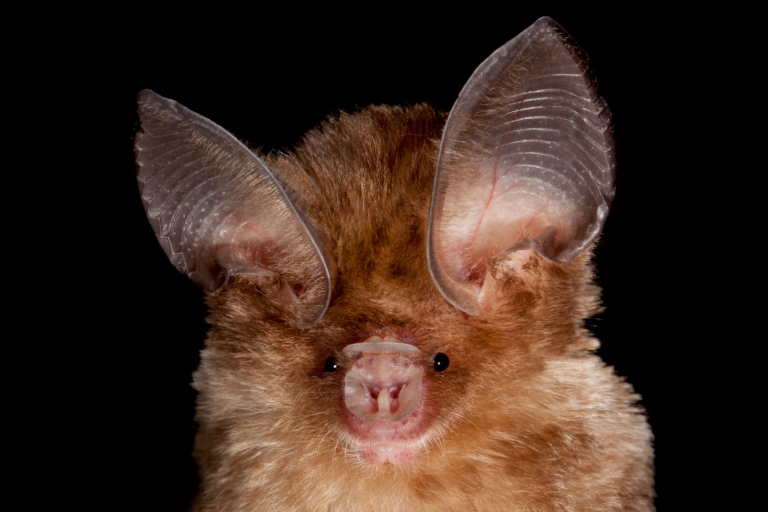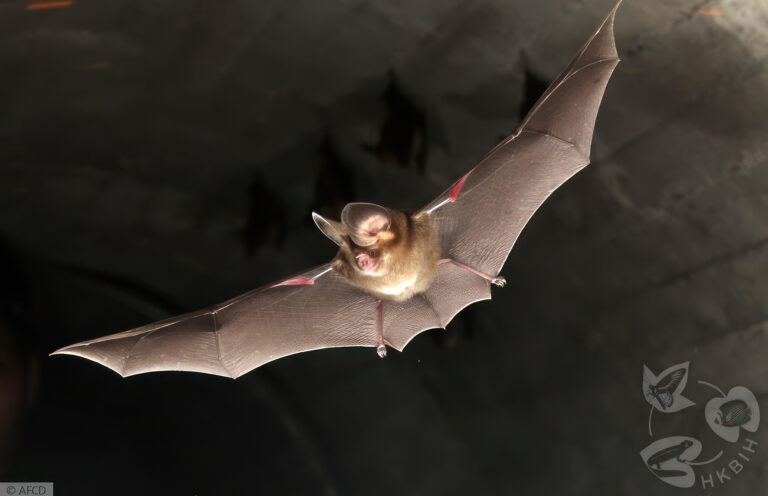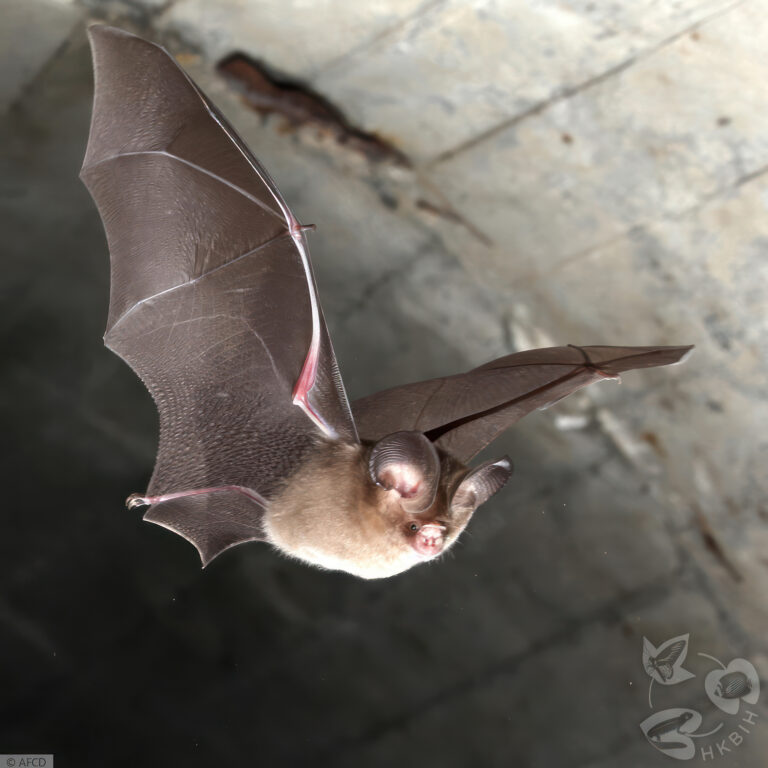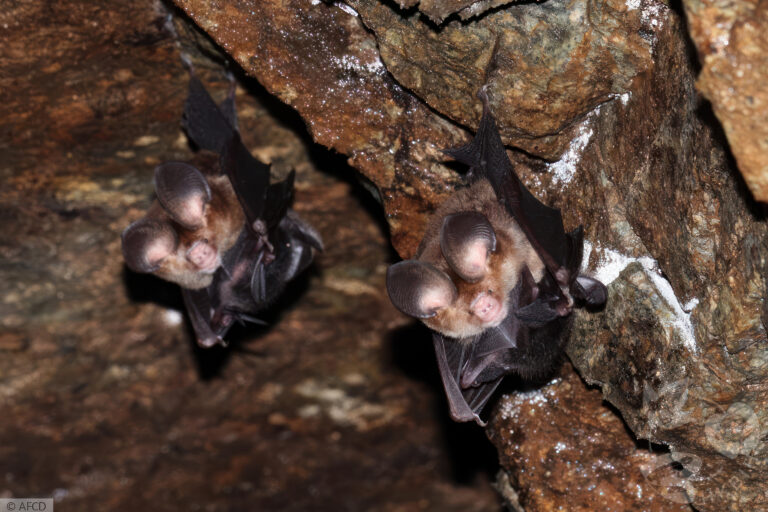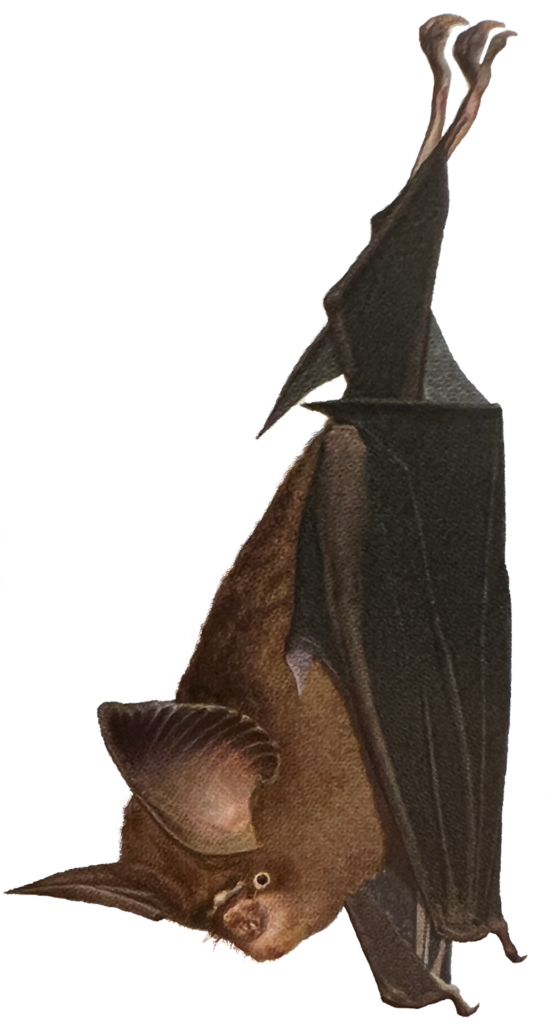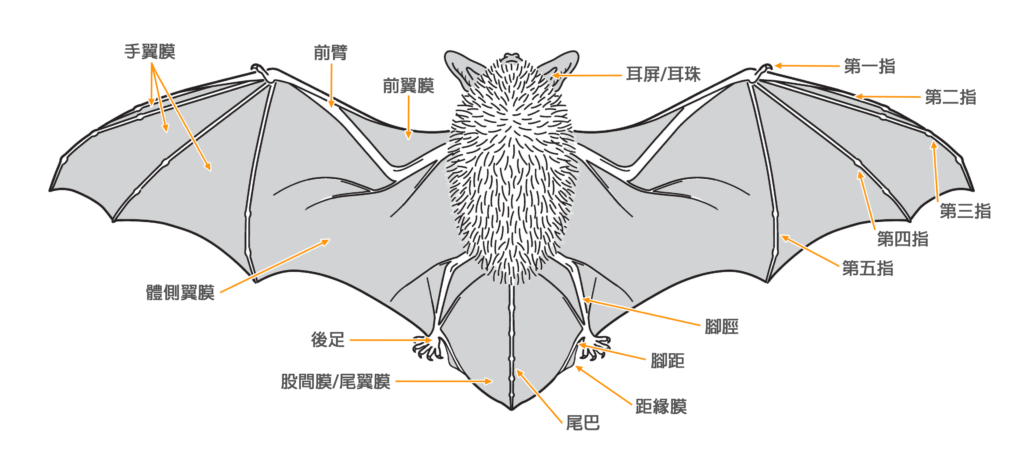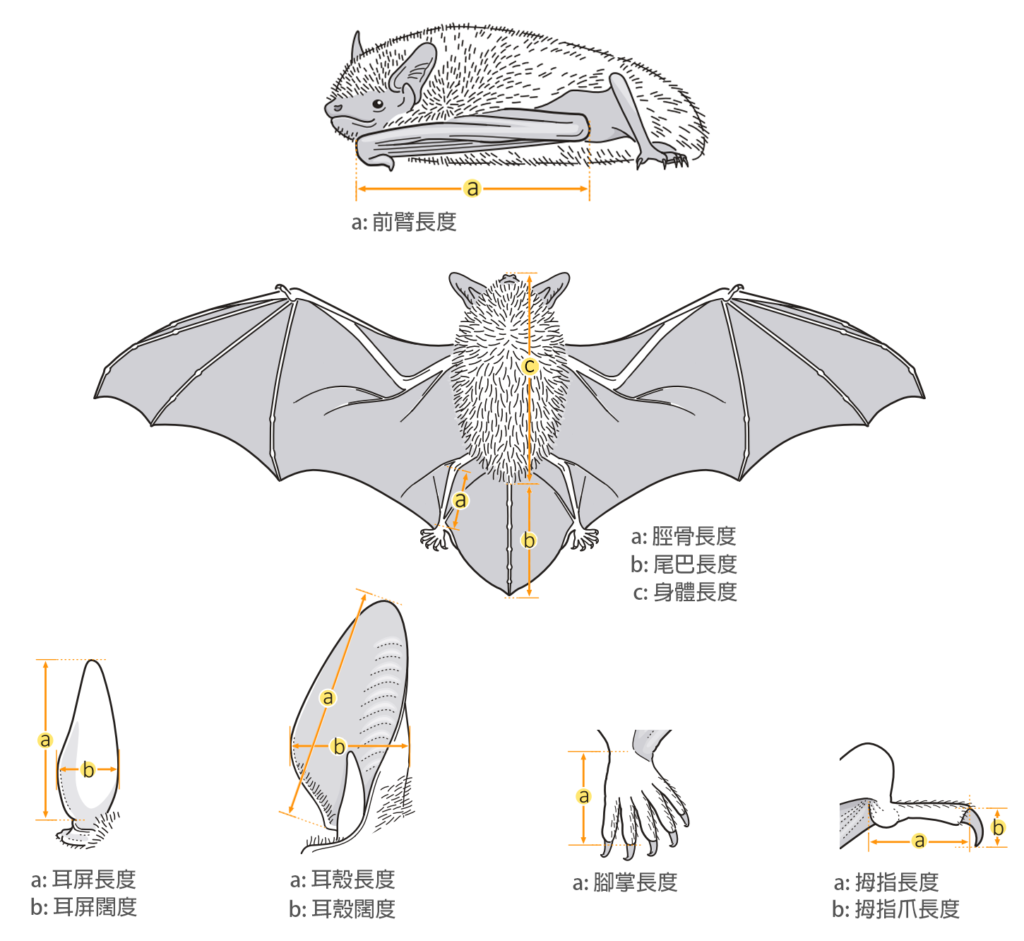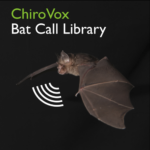- 香港蝙蝠資訊站
- 小蹄蝠 Hipposideros gentilis
小蹄蝠
Andersen's Leaf-nosed Bat
Hipposideros gentilis K. Andersen, 1918
分類學
| 科: | 蹄蝠科 (Hipposideridae) |
| 屬: | 蹄蝠屬 (Hipposideros ) |
| 學名: | Hipposideros gentilis K. Andersen, 1918 |
| 異名: | - |
| 本地英文名: | Andersen's Leaf-nosed Bat |
| 其他英文名: | Andersen's Roundleaf Bat, Exotic Leaf-nosed Bat |
| 本地中文名: | 小蹄蝠 |
| 其他中文名: | - |
| 分類註釋: | H. gentilis 以往一直被歸類為H. pomona 的亞種,但近年的形態學研究 (Srinivasulu & Srinivasulu, 2018) 指出華南地區的小蹄蝠應是另一獨立物種H. gentilis 。H. gentilis 包括2個已知亞種:H. g. gentilis (K. Andersen, 1918) 及 H. g. sinensis (K. Andersen, 1918)。據地理分布,香港的小蹄蝠屬於H. g. sinensis 。至今,其分類地位仍有不少迷團,包括其亞種的分布及中國(海南島)地區是否存在隱藏亞種等等。 |
| 外形特徵 | |
| 毛色: | 整體棕色或灰棕色;背部及耳基毛髮棕至灰棕色(基部灰白色,未端棕色),腹毛顏色較淺,呈棕白色;有時會有毛髮部分白化的個體;幼蝠整體顏色相對較深,呈灰黑色 |
| 耳朵: | 耳殼闊大,內側具多條橫坑紋,耳端略尖;耳殼及耳屏均為棕色至深棕色;對耳屏短小並與耳殼相連 |
| 頭部: | 頭顱細小;耳朵、眼睛及鼻葉比例上很大,顯得尤其可愛 |
| 鼻葉: | 鼻葉較簡單,分為前中後葉;前葉呈馬蹄狀(前端中央微微翹起),闊度大於長度,無側鼻葉;中葉隆起但不發達,比前葉及後葉稍窄,具4個均等橫向排列的圓形突起腺體,每一腺體長有一根較長的毛髮;後葉寬而短,與前葉寬度相若,具不明顯縱隔;鼻尖隔膜兩側水平,上部明顯收窄 |
| 尾部: | 尾長,未端略微突出股間膜 |
| 其他: | 前葉上方具∩型開口的前額囊,通常被毛髮覆蓋,不明顯 |
| 體形及體重測量 | |
| 體型: | 小型蹄蝠 |
| 軀幹: | 36.0 mm |
| 尾長: | 28.0 - 35.0 mm |
| 耳長: | 18.0 - 25.0 mm |
| 後足: | 6.0 - 9.0 mm |
| 前臂: | 38.0 - 43.0 mm |
| 體重: | 6.0 - 8.3 g |
| 翼形參數 | |
| 翼長: | 0.242 m |
| 翼面積: | 0.012 m2 |
| 翼載: | 5.44 ± 0.73 N/m2 (很低) |
| 翼展比: | 4.80 ± 0.28 (低) |
| 翼尖指數: | 1.78 ± 0.27 (中) |
| 參考資料: | Furey & Racey, 2016 |
生態資料
| 生境: | 穴棲蝙蝠,可棲息於多種生境,偏好棲息於遠離人煙的洞穴,例如引水道、水渠、小型水道、廢棄礦洞或防空洞等,部分亦會棲息於海蝕洞、廢棄建築物。牠們偏好棲息在洞穴的深處或盡頭的狹窄空間,棲息地普遍具低樓底、高溫濕度、少人為干擾等特性。繁殖季時,繁殖群落偏好選擇較多水體及高溫濕度的洞穴生兒育幼。 |
| 習性: | 冬季時組成數百至逾千隻的大型群落渡冬,本地曾記錄得最大的渡冬群落有餘900隻個體(2004年三月於蓮花山礦洞);通常在洞穴頂部或較高的牆壁聚棲,如群落密度過高,部分個體亦會選擇較低的位置棲身。群棲時,每隻個體之間會保持一定距離。夏季時,部分個體會離開原本的渡冬群落,遷移到其他棲地棲息及生兒育幼。 |
| 繁殖: | 生產期為每年的五月至六月,通常產一隻。幼蝠在出生後的第13天眼睛方能完全張開,在第19天可以短距離飛行,在第31天則能夠靈活地飛行。幼蝠一般會以倒轉的姿勢抱緊母蝠的腹部,由母蝠帶著外出覓食,但有時母蝠亦會留下有能力懸掛的幼蝠在巢穴等待。在後期,幼蝠長大到與成蝠相若時,幼蝠會懸掛在母蝠的肩膀上,成形「串燒」般的姿態。 |
| 冬眠: | 約在12月下旬至2月冬眠,實際冬眠時間會因應天氣溫度而變化。 |
| 飛行: | 飛行速度緩慢且飛行效率遜色,但靈活性十分優秀,能急速轉彎,適合短距離飛行;小蹄蝠的拍翼速度急促,習慣在低空或密林中慢速飛行,不時會停留在枝葉上休息。 |
| 覓食: | 捕食方法包括於空中捕食、拾遺式及鶲式捕食。捕獲獵物後會帶回其巢穴進食,並在巢穴內遺下獵物的遺骸。 |
| 食性: | 食蟲性蝙蝠,小蹄蝠的獵物大小差異甚大,小至3mm以下的長角亞目(Nematocera ),大至身長約50mm的長尾水青蛾(Actias sinensis)。牠們特別喜愛捕食鱗翅目(Lepidoptera)昆蟲,包括蛾類及蝶類,如毛翅夜蛾(Lagoptera juno)、大燕蛾(Lyssa Zampa)、黃襟蛺蝶(Cupha erymanthis)、暮眼蝶(Melanitis leda)等等,其次是鞘翅目(Coleoptera)的昆蟲。 |
香港(石崗)小蹄蝠食性
香港(蓮花山)小蹄蝠食性
分布概況
| 本地分布: | 新界、香港島、大嶼山及離島 |
| 全球分布: | |
| H. g. gentilis | 尼泊爾、印度、孟加拉國、緬甸、泰國、馬來西亞半島和安達曼群島 |
| H. g. sinensis | 中國東南部和東南部(包括海南島)、泰國、老撾、越南和柬埔寨(Monadjem et al., 2019) |
| H. g. ssp. | 中國(海南島)可能有潛在亞種(Zhao et al., 2015) |
本地分布地圖
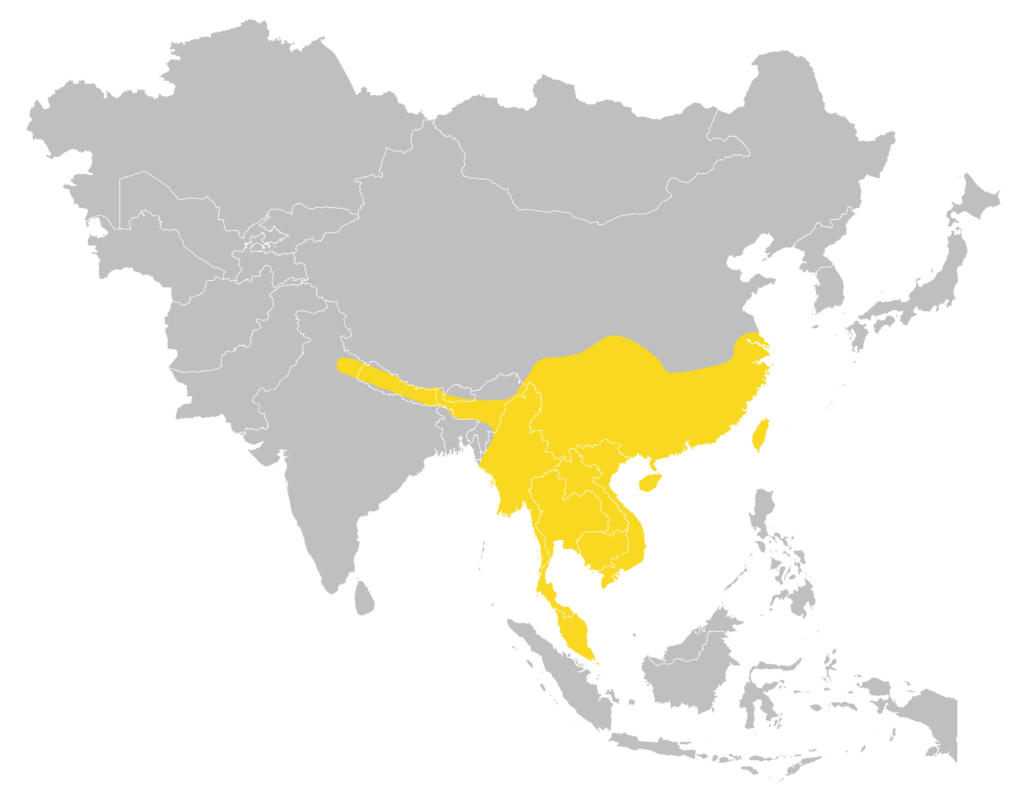
全球分布地圖
(Monadjem et al., 2019)
本地狀況及載列名錄
| 首次紀錄: | 1953年 |
| 物種來源: | 原生 |
| 本地現況: | 十分常見 (Shek & Chan, 2005) |
| 國內現況: | 無危 (中國脊椎動物紅色名錄) |
| 全球現況: | 未評級 (IUCN紅色名錄) |
| 潛在威脅: | 待續 |
回聲定位

如有需要,請先註冊會員,並以電郵方式聯絡小蝙申請閱讀權限。
| Parameter | Value |
|---|---|
| Call structure | CF-FM |
| Duration | 6.30 ms |
| Inter pulse interval | 23.20 ms |
| Peak frequency | - |
| Highest frequency | 129.60 kHz |
| Lowest frequency | 103.10 kHz |
| 亞種: | H. g. sinensis |
| 錄音地區: | 香港 |
| 錄音方式: | 人手放飛/野生叫聲 |
| 參考資料: | Shek & Lau, 2006 |
| Parameter | Value |
|---|---|
| Call structure | CF-FM |
| Duration | 7.00 ± 2.30 ms |
| Inter pulse interval | 20.90 ± 4.50 ms |
| Peak frequency | 125.10 ± 2.30 kHz |
| Initial frequency | 125.00 ± 2.50 kHz |
| End frequency | 104.10 ± 6.30 kHz |
| 亞種: | H. g. sinensis |
| 錄音地區: | 越南 |
| 錄音方式: | 人手放飛/錄音棚 |
| 參考資料: | Furey et al., 2009 |
| Parameter | Value |
|---|---|
| Call structure | CF-FM |
| Duration | 4.60 ± 1.40 ms |
| Inter pulse interval | - |
| Peak frequency | 127.30 ± 2.80 kHz |
| Start frequency | - |
| End frequency | - |
| 亞種: | H. g. sinensis |
| 錄音地區: | 中國(雲南) |
| 錄音方式: | 野生叫聲 |
| 參考資料: | Jin et al., 2015 |
參考資料
Ades, G. W. J. (1994). A comparative ecological study of insectivorous bats (Hipposideridae, Vespertilionidae and Rhinolophidae) in Hong Kong, with special reference to dietary seasonality. [Doctoral dissertation, The University of Hong Kong].
Furey, N. M., Mackie, I. J., & Racey, P. A. (2009). The role of ultrasonic bat detectors in improving inventory and monitoring surveys in Vietnamese karst bat assemblages. Current Zoology, 55(5), 327 341.
Furey, N. M., & Racey, P. A. (2016). Can wing morphology inform conservation priorities for Southeast Asian cave bats?. Biotropica, 48(4), 545-556.
Guo, Q., Wang, J., Yang, Y., Zhang, G., Liu, W., Niu, H., & Bu, Y. (2022). Roost selection and ecology of Hipposideros pomona in China. Animal Biology, 72(3), 257-274.
Jeyapraba, L., Margaret, I. V., Addline, D., & Sakthi, V. (2023). Prediction of foraging strategy of insectivorous bats through their wing morphology. Journal of Survey in Fisheries Sciences, 10(3S), 1903-1917.
Jiang, Z. G., Jiang, J. P., Wang, Y. Z., Zhang, E., Zhang, Y. Y., Li, L. L., Xie, F., Cai, B., Cao, L., Zheng, G. M., Dong, L., Zhang, Z. W., Ding, P., Luo, Z. H., Ding, C. Q., Ma, Z. J., Tang, S. H., Cao, W. X., Li, C. W., Hu, H. J., Ma, Y., Wu, Y., Wang, Y. X., Zhou, K. Y., Liu, S. Y., Chen, Y. Y., Li, J. T., Feng, Z. J., Wang, Y., Wang, B., Li, C., Song, X. L., Cai, L., Zang, C. X., Zeng, Y., Meng, Z. B., Fang, H. X., & Ping, X. G. (2016). Red List of China’s Vertebrates. Biodiversity Science 24(5), 500‑551.
Jin, L., Yang, S., Kimball, R. T., Xie, L., Yue, X., Luo, B., … & Feng, J. (2015). Do pups recognize maternal calls in pomona leaf-nosed bats, Hipposideros pomona?. Animal Behaviour, 100, 200-207.
Lin, A. Q., Jin, L. R., Shi, L. M., Sun, K. P., Berquist, S. W., Liu, Y., & Feng, J. (2011). Postnatal development in Andersen’s leaf-nosed bat Hipposideros pomona: flight, wing shape, and wing bone lengths. Zoology, 114(2), 69-77.
Monadjem, A., Soisook, P., Thong, V. D., & Kingston, T.
(2019). Hipposideridae. In Mittermeier, R. A., & Wilson, D. E. (Eds.), Handbook of the Mammals of the World – Volume 9 Bats (pp. 227-258). Lynx Edicions.
Shek, C. T. (2006). A Field Guide to the Terrestrial Mammals of Hong Kong. Friends of country park and cosmos book limited.
Shek, C. T., & Chan, C. S. M. (2005). Roost Censuses of Cave Dwelling Bats of Hong Kong. Hong Kong Biodiversity, 10, 1-8.
Shek, C. T., & Lau, C. T. Y. (2006). Echolocation Calls of Five Horseshoe Bats of Hong Kong. Hong Kong Biodiversity, 13, 9-12.
Srinivasulu, B., & Srinivasulu, C. 2018. In plain sight: bacular and noseleaf morphology supports distinct specific status of Roundleaf Bats Hipposideros pomona Andersen, 1918 and Hipposideros gentilis Andersen, 1918 (Chiroptera: Hipposideridae). Journal of Threatened Taxa, 10(8): 12018-12026.
Tong, C. P. (2016). Distribution and preference of landscape features and foraging sites of insectivorous bats in Hong Kong urban parks. [Master’s dissertation, The University of Hong Kong].
Yuzefovich, A. P., Artyushin, I. V., & Kruskop, S. V. (2021). Not the cryptic species: diversity of Hipposideros gentilis (Chiroptera: Hipposideridae) in Indochina. Diversity, 13(5), 218.
Zhao, L. Z., Bu, Y. Z., Zhou, H. X., Zhou, H. W., Zhang, Z. X., & Niu, H. X. (2015). Differences in Hipposideros pomona from three geographical regions in China based on morphology and molecular sequences data. Journal of Mammalogy, 96(6), 1305-1316.
Hong Kong Bat Radar. (01/05/2024). A Field Guide to Bats of Hong Kong: Andersen’s Leaf-nosed Bat (Hipposideros gentilis ). https://hkbatradar.com/en/hipposideros_gentilis
